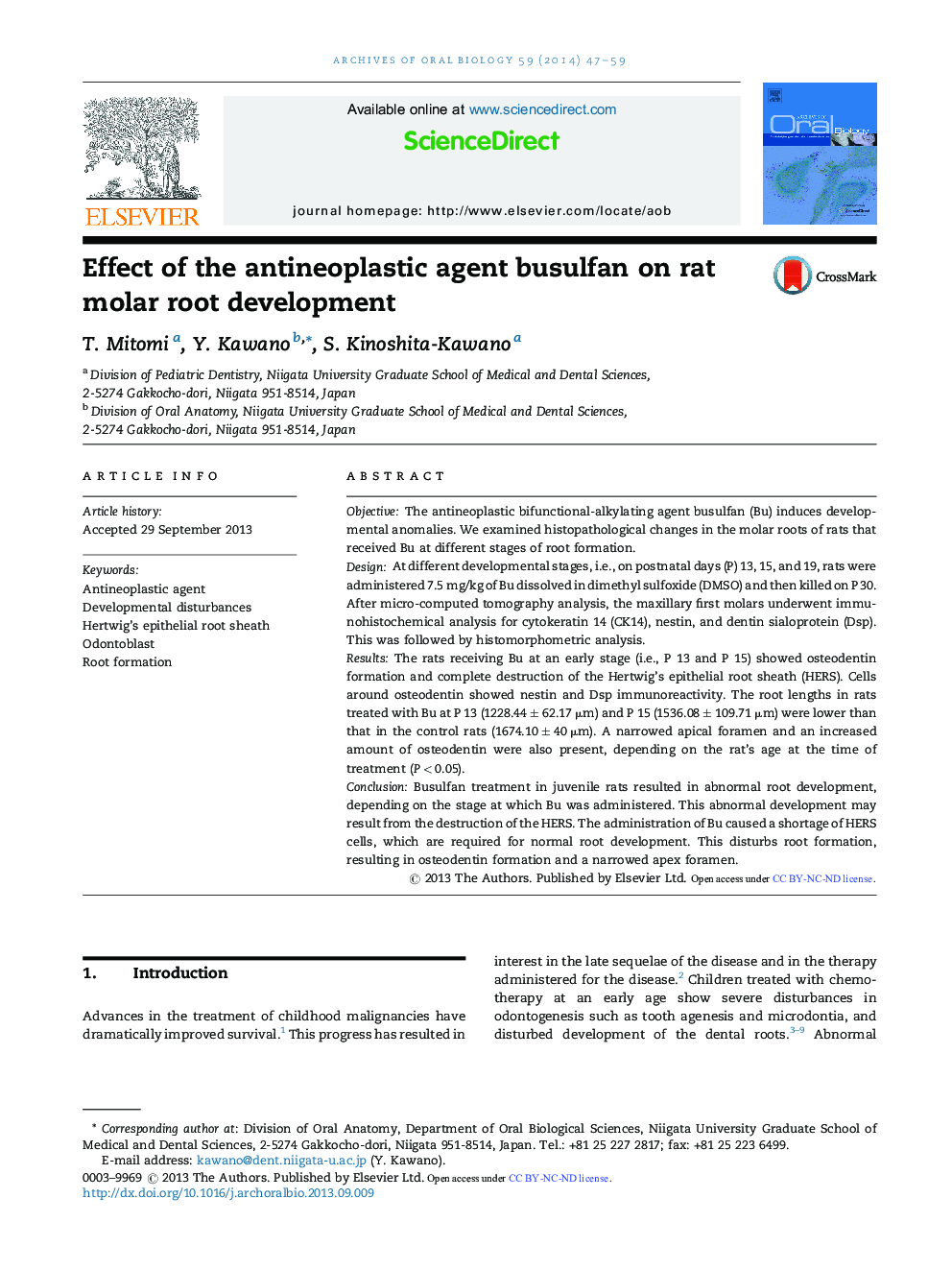| Article ID | Journal | Published Year | Pages | File Type |
|---|---|---|---|---|
| 6050996 | Archives of Oral Biology | 2014 | 13 Pages |
ObjectiveThe antineoplastic bifunctional-alkylating agent busulfan (Bu) induces developmental anomalies. We examined histopathological changes in the molar roots of rats that received Bu at different stages of root formation.DesignAt different developmental stages, i.e., on postnatal days (P) 13, 15, and 19, rats were administered 7.5 mg/kg of Bu dissolved in dimethyl sulfoxide (DMSO) and then killed on P 30. After micro-computed tomography analysis, the maxillary first molars underwent immunohistochemical analysis for cytokeratin 14 (CK14), nestin, and dentin sialoprotein (Dsp). This was followed by histomorphometric analysis.ResultsThe rats receiving Bu at an early stage (i.e., P 13 and P 15) showed osteodentin formation and complete destruction of the Hertwig's epithelial root sheath (HERS). Cells around osteodentin showed nestin and Dsp immunoreactivity. The root lengths in rats treated with Bu at P 13 (1228.44 ± 62.17 μm) and P 15 (1536.08 ± 109.71 μm) were lower than that in the control rats (1674.10 ± 40 μm). A narrowed apical foramen and an increased amount of osteodentin were also present, depending on the rat's age at the time of treatment (P < 0.05).ConclusionBusulfan treatment in juvenile rats resulted in abnormal root development, depending on the stage at which Bu was administered. This abnormal development may result from the destruction of the HERS. The administration of Bu caused a shortage of HERS cells, which are required for normal root development. This disturbs root formation, resulting in osteodentin formation and a narrowed apex foramen.
